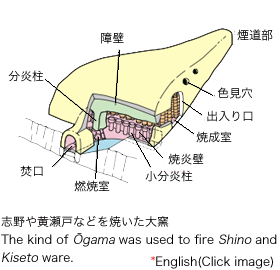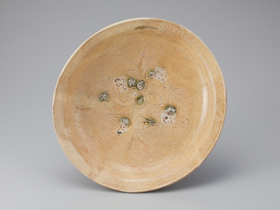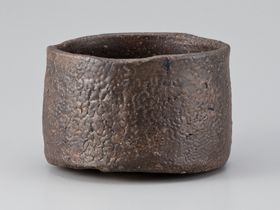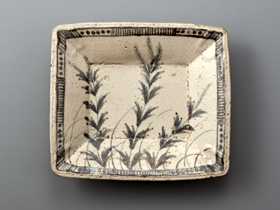美濃の窯
Kilns Used to Fire Mino Ware
Back
大窯
Ōgama (large, single-chamber tunnel kiln)
Ōgama (large, single-chamber tunnel kiln)

15世紀の末ごろになると、山の斜面を利用しつつも、窯は地上または半地下に築かれるようになりました。天井を支える柱を造ることで、焼成室も大きく広がり、昇炎壁の近くには製品の出し入れ口も造られ、仕事の効率も上がりました。
大窯では、「黄瀬戸」、「瀬戸黒」、「志野」など、茶の湯で使用された美濃桃山陶も焼成されました。美濃桃山陶を代表する国宝志野茶碗銘「卯花墻」をはじめ、数多くの名品が、可児市久々利の大萱・大平で誕生しました。可児は、まさしく美濃桃山陶発祥の地といえます。
大窯では、「黄瀬戸」、「瀬戸黒」、「志野」など、茶の湯で使用された美濃桃山陶も焼成されました。美濃桃山陶を代表する国宝志野茶碗銘「卯花墻」をはじめ、数多くの名品が、可児市久々利の大萱・大平で誕生しました。可児は、まさしく美濃桃山陶発祥の地といえます。
From around the end of the fifteenth century kilns began to be built that utilized the natural slope of a hill, but were built half above and half below ground level. By employing pillars to support the roof, it was possible to create a large firing chamber and efficiency was improved by the addition of an entrance in the side wall to load and unload the kiln.
Momoyama period (1573-1603) pottery from Mino Province for use in tea ceremonies, such as Kiseto, Setoguro, and Shino ware, was produced using Ōgama. Many of the famous examples of Mino pottery dating from this period, including the ‘Unohanagaki’ tea bowl (national treasure), were created at Ōgaya and Ōhira, in the Kukuri area of Kani City. It can truly be said that Kani City was the birthplace of Momoyama-period Mino ware.
Momoyama period (1573-1603) pottery from Mino Province for use in tea ceremonies, such as Kiseto, Setoguro, and Shino ware, was produced using Ōgama. Many of the famous examples of Mino pottery dating from this period, including the ‘Unohanagaki’ tea bowl (national treasure), were created at Ōgaya and Ōhira, in the Kukuri area of Kani City. It can truly be said that Kani City was the birthplace of Momoyama-period Mino ware.

黄瀬戸印花文大皿
Large Kiseto plate with stamped decoration
Large Kiseto plate with stamped decoration

瀬戸黒茶碗
Setoguro ware tea bowl
Setoguro ware tea bowl

志野草絵角皿
Shino ware square plate with grasses motif
Shino ware square plate with grasses motif
※いずれも可児郷土歴史館蔵 桃山期
* All date from the Momoyama period, and belong to the Kani Local History Museum
* All date from the Momoyama period, and belong to the Kani Local History Museum